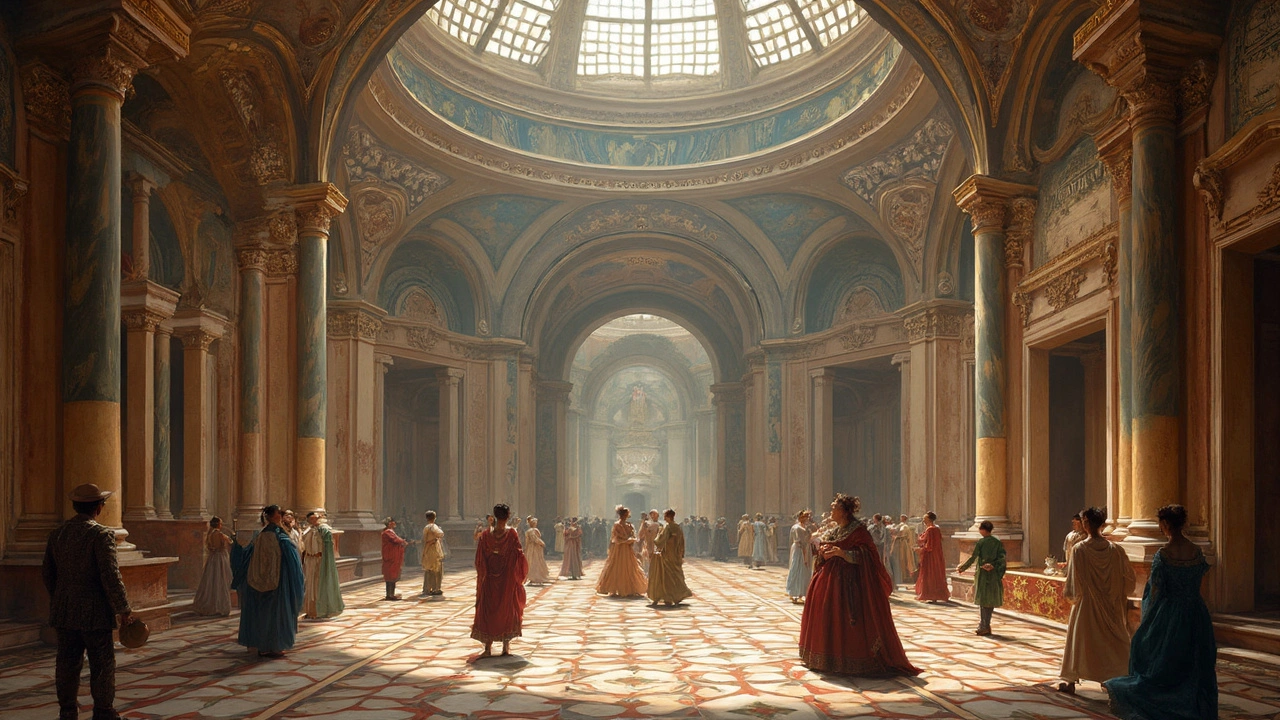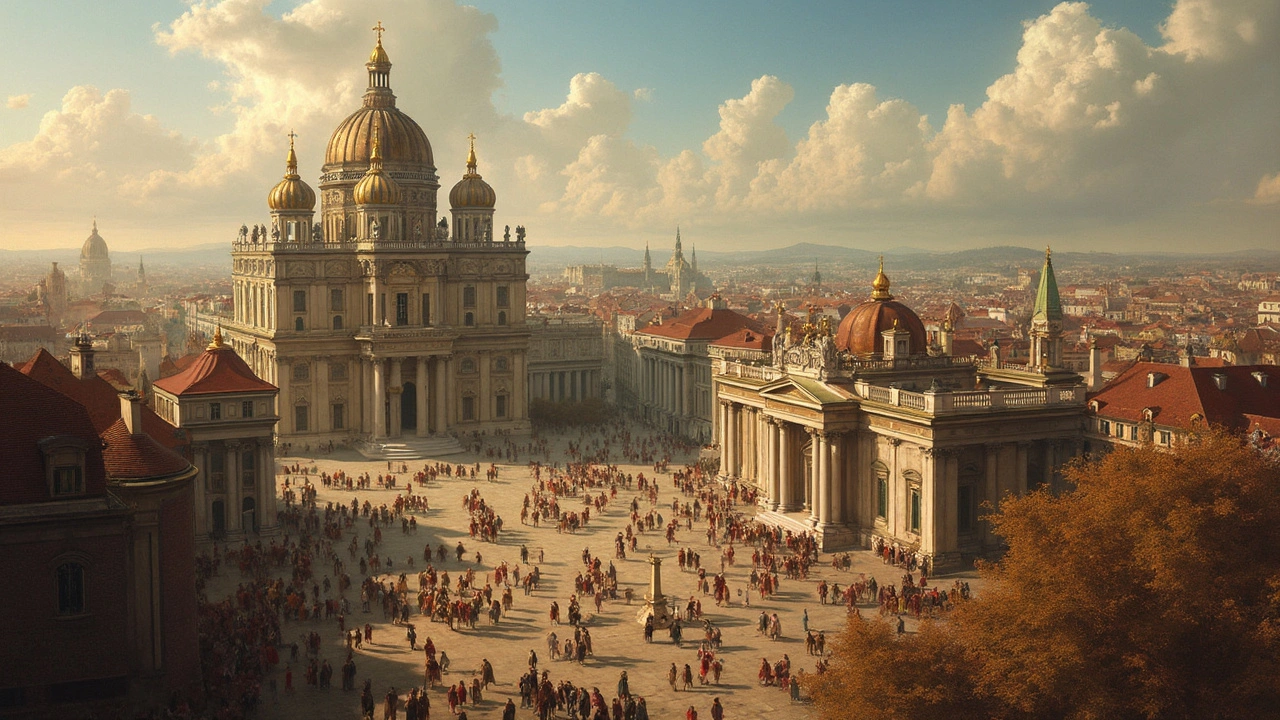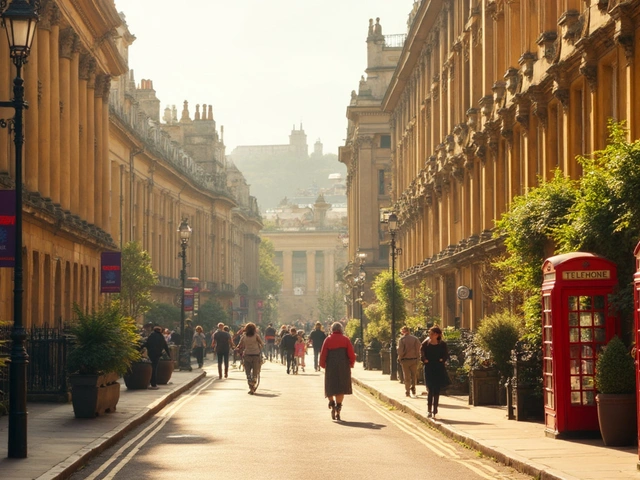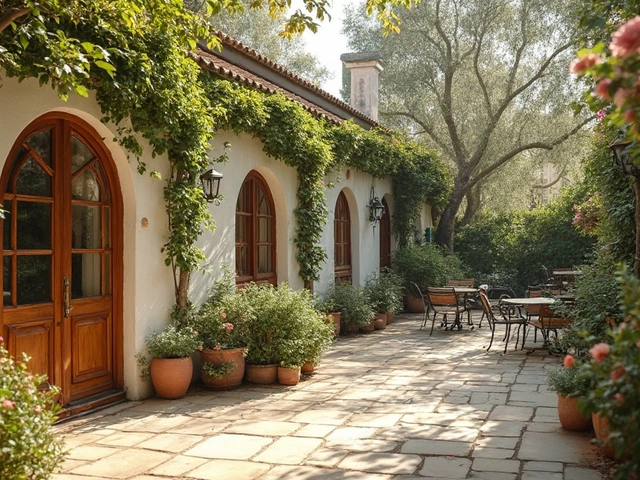Renaissance architecture didn't just spring up out of nowhere; it was a conscious revival of the classical elements of ancient Rome. Imagine a time when architects decided flat was boring, so they started incorporating domes, columns, and symmetry into everything. This wasn't just about making things pretty. Oh no. It was about showcasing power and wealth.
How could a building scream importance more than a towering dome or a stunning colonnade? Wealthy patrons wanted to leave their mark, and architecture was the megaphone. The emphasis on perspective, order, and balance wasn't just for looks. It was a symbolic rebirth, reflecting stability and control.
Why does the architecture of the Renaissance period still hold our fascination? Maybe because it turned mundane structures into masterpieces and changed how a building could express ideas. As we go forward, you'll see how even today's architecture still has a foot in those Renaissance foundations.
- Beginning of the Renaissance Era
- Features of Renaissance Architecture
- Famous Structures and Architects
- Impact on Modern Architecture
Beginning of the Renaissance Era
The Renaissance kicked off in Italy in the 14th century, right when folks started craving a bit more art and culture after the Middle Ages. Imagine a world that was all about trying new things and blending cool old ideas with fresh ones. That's what the Renaissance was—a rebirth of learning, science, and, most importantly for us here, architecture.
Why Italy? Well, it was kind of the perfect storm. Italy was full of ancient Roman ruins that sparked curiosity. And let's not forget the wealth that had been amassed by Italian states like Florence, Venice, and Rome. Money made it possible to experiment with designs, so artists and thinkers flocked there. They wanted to play around with ideas rooted in Roman and Greek philosophy, all while showing off to the rest of Europe.
Now you're probably thinking, who were the big shots? Enter Filippo Brunelleschi, who basically coined the Renaissance look with his work on the Florence Cathedral dome. His bold designs set a pattern for others to follow, turning simple stone into symbols of power and wealth. Soon after, other greats like Leon Battista Alberti and Michelangelo started leaving their architectural marks, further expanding these new styles.
Economic and Social Context
The Renaissance was not just about art; it was also about society and economy. As trade routes expanded, wealthier merchant classes emerged, eager to flaunt their fortunes through grand architecture. And then you had the Medici family in Florence bankrolling all these projects. Their influence was massive, pushing architecture to new heights because they saw value in tying their family name to breathtaking buildings.
So the beginning of the Renaissance Era wasn't just an overnight change. It was a mix of economic stability, cultural shifts, and geographical advantages. This set the stage for a revolutionary approach to building and design, one that spoke volumes about one's stature in society.
Features of Renaissance Architecture
So, what makes Renaissance architecture stand out? At its core, it brings together a mix of art, science, and a dash of human ambition. Let’s break it down.
Symmetry and Proportion
Symmetry was all about balance. Picture perfect harmony where each side of a structure mirrors the other, creating an aesthetic balance that was both pleasing to the eyes and a statement of control. Proportion, inspired by human anatomy and classical orders, was the cornerstone, ensuring every element fit together like pieces in a puzzle.
Columns and Arches
Building on the classical orders, columns made a comeback—Doric, Ionic, and Corinthian styles found their spot on a Renaissance facade. Arches weren't left behind either. They were everywhere, from windows to doorways, adding a touch of class and durability.
Domes
Talk about a skyline game-changer! The dome, highlighted in creations like the Florence Cathedral, became a symbol of engineering prowess. It wasn’t just about aesthetics; it was a structural feat showcasing what human ingenuity coupled with mathematical precision could create.
Ornamental Details
Every inch could be a canvas, with decorative motifs adding to the richness. Think frescoes, intricate carvings, and those jaw-droppingly detailed ceilings. They turned buildings into works of art, making sure no visitor left unimpressed.
Main Materials
Stone and brick were the go-to materials. They screamed durability—a message saying ‘we’re here to stay.’ Solid, reliable choices for structures intended to last and witness generations.
And just for fun, here’s a quick peek at some typical materials used:
| Materials | Purpose |
|---|---|
| Marble | Beauty and luxury |
| Brick | Foundation and walls |
| Limestone | Carvings and ornaments |
These features weren't just for show. They were statements of power and wealth, and they set the stage for a new era in architecture. The best part? They weren't restricted to Italy—they spread across Europe, leaving an indelible mark on architecture and society.

Famous Structures and Architects
When we're talking about Renaissance architecture, it's impossible not to bring up some iconic buildings that people still flock to see today. One such marvel is the Florence Cathedral, known for its massive dome engineered by Filippo Brunelleschi. Can you believe he actually invented new tools just to achieve this? Now that's dedication!
The Masters of Form
Brunelleschi isn’t the only genius from this era. We also have Leon Battista Alberti, a true Renaissance man, known for the Church of Sant'Andrea in Mantua. His designs were rooted in ancient Roman ideals, yet they were anything but old-fashioned.
Another big name is Andrea Palladio, and his influence is so widespread that there's an entire style named after him—Palladianism. His Villa La Rotonda is a perfect example of symmetry and balance, dwelling in harmony with its surroundings.
"Architecture is a social act and the material theater of human activity." — Spiro Kostof, architectural historian
Structures That Defined an Era
Let's not skip on the magnificent St. Peter's Basilica, a project that brought together some of the greatest architects like Michelangelo and Bramante. It's not just a religious site; it’s a declaration of artistic mastery and spiritual power coming together in stone.
And don't forget The Palazzo Farnese in Rome, a masterpiece of Renaissance architecture that was both a family palace and a statement of prestige. Its elegant yet imposing facade still impresses visitors today.
What's fascinating is how these architects were able to convey their patrons' power and ambitions through their work. These structures weren't just homes or places of worship; they were storytelling at its grandest scale.
Impact on Modern Architecture
Renaissance architecture is like that classic outfit that never goes out of style—it's timeless. The influence of this era on modern architecture is unmistakable. From government buildings to museums, the legacy of domes and columns lives on, but it’s not just about aesthetics. These elements still convey power and wealth, making them a go-to for places that want to seem imposing and important.
Take structures like the United States Capitol building or the British Museum. Both are modern yet steeped in the Renaissance architecture tradition of grand facades and towering domes. These designs contribute to their gravitas, reinforcing their roles as places of authority and knowledge.
The Functionality Factor
It wasn’t all flair; Renaissance architects were also about function. Modern architects have adopted their focus on symmetry and proportion not just for formality but for practical reasons. Proper balance in a building improves light distribution and climate control—which any modern office worker can appreciate during those never-ending meetings.
Material Innovations
Using sturdy materials like stone and marble was a big deal in the Renaissance. What’s cool is that today’s architects have upgraded those ideas, using steel and glass but retaining the same principles of grandeur. It’s like swapping out vinyl records for streaming—same principle, new tools.
Even materials have an impact on how space is perceived. With modern tech, architects replicate Renaissance styles using eco-friendly resources, making projects like green skyscrapers possible. It shows you can be both grand and green.
Lasting Lessons
| Renaissance Element | Modern Influence |
|---|---|
| Domes | Still iconic in capitals and churches |
| Symmetry | Crucial for building function and form |
| Columns | Used for visual strength in various structures |
Why should we care? Because understanding the architectural past helps architects create spaces that are not just buildings but landmarks. The continuation of Renaissance architecture principles in today’s world reminds us that some ideas are too good to change.




